![]()
![]()
![]()
Use LEFT and RIGHT arrow keys to navigate between flashcards;
Use UP and DOWN arrow keys to flip the card;
H to show hint;
A reads text to speech;
60 Cards in this Set
- Front
- Back
|
What is a mapping rule |
It is signed more than one output to each input |
|
|
What do you call a mapping rule where each input only has one output |
A function |
|
|
Why do you use the vertical line test? |
To see if a mapping is a function, if it is a function each line will only meet the graph once |
|
|
What is the horizontal line test? |
It determines what kind of functions it is |
|
|
What is a one-to-one function? |
Every why only has one x, each line only meets the graph once in the horizontal line test |
|
|
What is a many to one function? |
At least one y value corresponds to more than 1 X value , meets the graph more than once in the horizontal line test |
|
|
What is domain |
The set of input values, the X values |
|
|
What is range? |
All the possible outputs, y values |
|
|
Which function comes first in fg(X)? |
G into f |
|
|
What is another way of writing ff(X)? |
f^2(X) |
|
|
What must occur for FG (X) to occur? |
The range of g must lie within the domain of f |
|
|
What is a composite function? |
A function applied to a function |
|
|
How do you find an inverse function |
-make f(X) to y -rearrange to get x by itself -replace y's with x's and x with f(X) |
|
|
F(X) into F^-1(X) |
X |
|
|
In terms of f(X) , what is f^-1(X) range |
Domain of f(X) |
|
|
What order must you put transformations in if it is a horizontal transformation and a vertical transformation? |
The order doesn't matter |
|
|
Order for horizontal and horizontal transformation? |
Translate then stretch |
|
|
Order for vertical then vertical translation |
Stretch then translation |
|
|
What does the modulus absolute value do |
It is a function that reverses the sign of negative numbers |
|
|
|x-a|<b = |
a-b<x<a+b |
|
|
What must you do when solving a modulus function? |
Sketch the graph |
|
|
What can you do if the intersection of your two graphs is on the unreflected side in a modulus function graph? |
You can rewrite the equation without the modulus |
|
|
What can you do if the intersection of your two graphs on a modulus function graph is on the reflected side? |
Rewrite the equation with a minus sign instead of the modulus |
|
|
|a|=|b| ~ |
b^2=a^2 |
|
|
How would you find the limit of a convergent sequence? |
You would set Un+1=Un , and then replace all Un+1 and Un with L and solve for L |
|
|
What is a series? |
The sum of a sequence up to a certain point |
|
|
Do geometric or arithmetic sequences have a common difference? |
Arithmetic sequences |
|
|
What can you use to find the first term and the common difference in an arithmetic sequence? |
Simultaneous equations |
|
|
What must you do if asked to find the number of terms or a term number in a geometric series? |
Use logs after setting up an inequality |
|
|
What do the three trig graphs look like? |
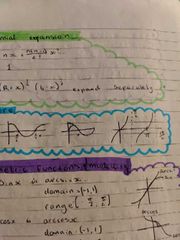
|
|
|
What is arcsin domain and range? |
Domain -1, 1 Range - pi / 2, pi/2 |
|
|
What is arc cos domain and range? |
Domain - 1, 1 Range 0, pi |
|
|
What is arctan domain and range? |
Domain real numbers Range - pi / 2, pi / 2 |
|
|
What do you get if you take tan (arctanx) |
X |
|
|
What is the period of a graph? |
The horizontal distance until the graph |
|
|
How do you work out the period of a graph |
2 pi/|b| |
|
|
What is the length of an arc |
Rx theta |
|
|
What is the area of a segment? |
1/2r^2(theta-sin(theta)) |
|
|
Small angle approximation of sin theta |
Theta |
|
|
What is the small angle approximation of cos theta |
1 - 1 / 2 theta^2 |
|
|
What is the small angle approximation of tan theta |
Theta |
|
|
What is tan (A+B) |
tana + tanb/ 1 - tan a tan b |
|
|
Sin2A |
2sinAcosA |
|
|
Cos 2A |
2cos^2-1 1-2sin^2A Cos^2-sin^A |
|
|
Tan2A |
2tan/1-tan^2A |
|
|
In form Rsin(X+&) |
-Expand using compound angle identities -Equate r sin theta to sin and r cos theta to Cos -find R using R=√a^2+b^2 -find & using tan^-1B/A |
|
|
Secx |
1 / cos x |
|
|
Cosec x |
1 / sin x |
|
|
Cotx |
1 / tanx |
|
|
Differentiate sin x |
Cos x |
|
|
Differentiate cos x |
-sinx |
|
|
Differentiate tan x |
Sec^2x |
|
|
The chain rule |
Split function so one section = u Dy/du X du/dx |
|
|
Product rule y=uv |
Vu'+uv' |
|
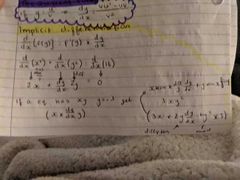
|
. |
|
|
. |
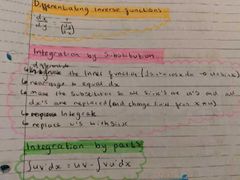
|
|

|
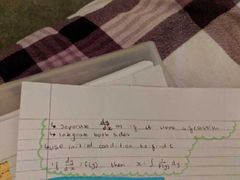
|
|
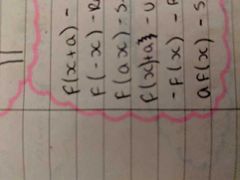
|

|
|
|
A/X graph |

|
|
|
A/x^2 |
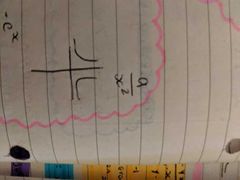
|

